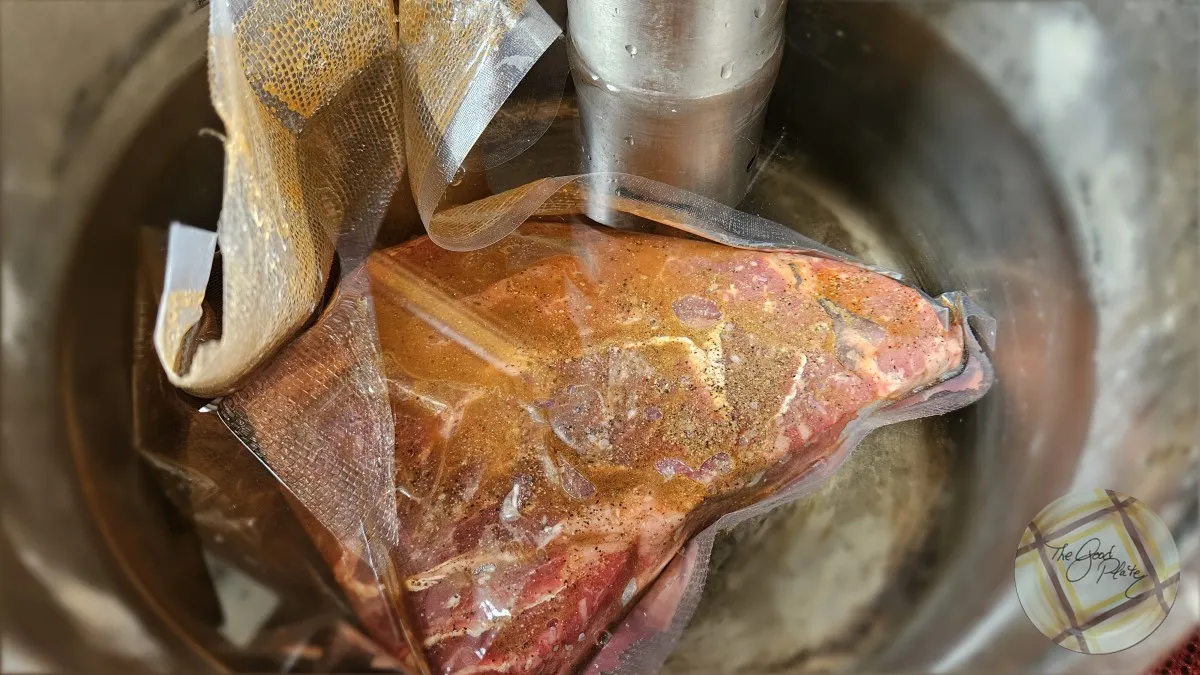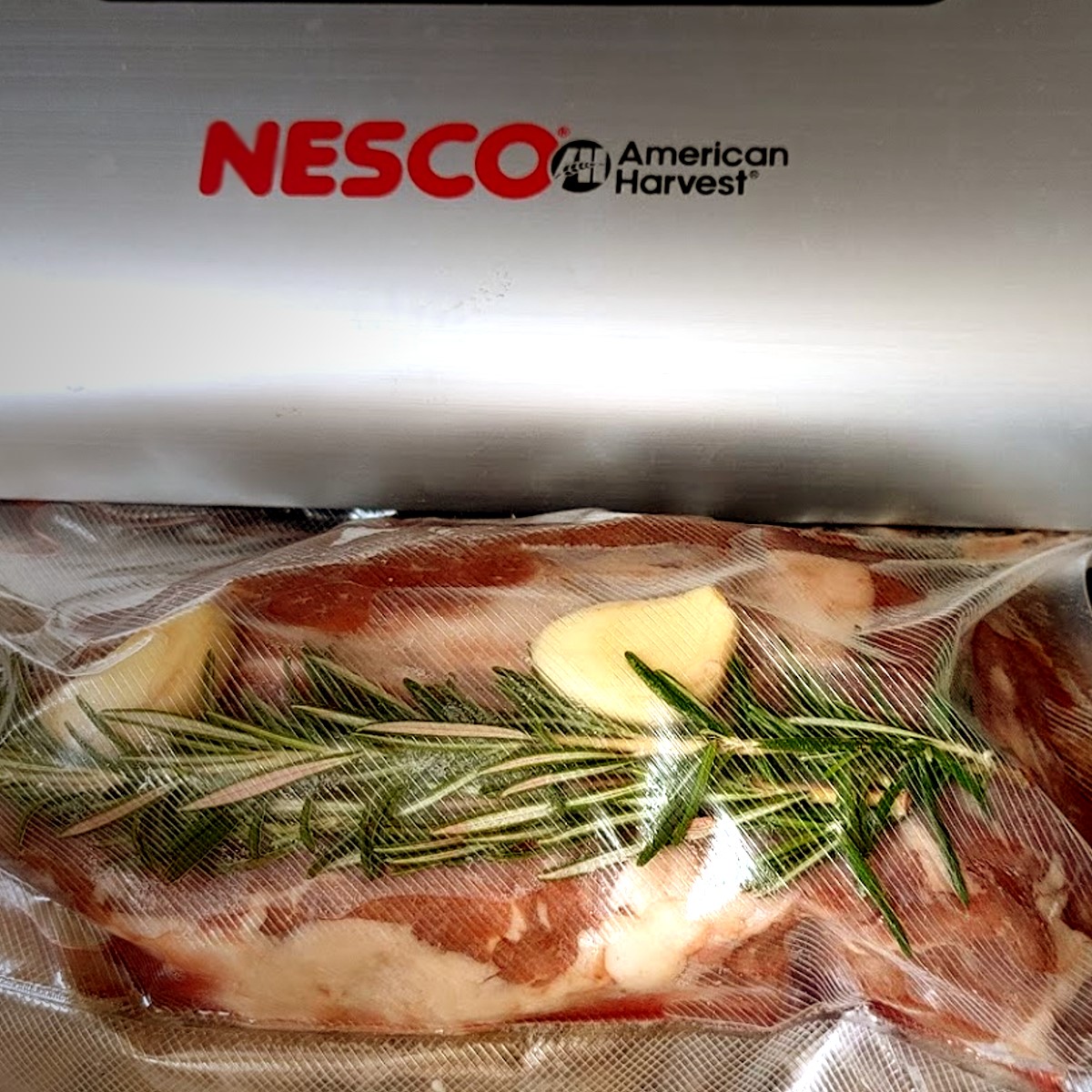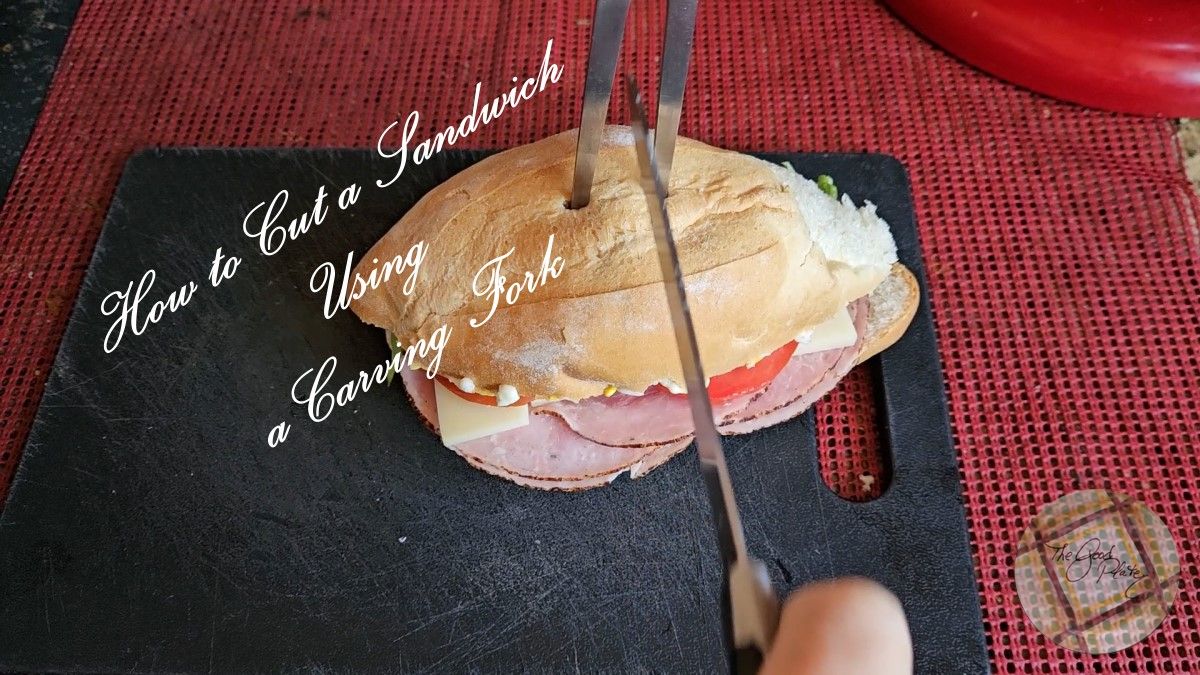Defrost food safely using the sous vide method. It is better than the microwave and safer than plain water.
We’ve all been there. Whatever you want to defrost is too big to fit in the microwave, and even if it isn’t, the microwave winds up cooking part of the food. Worse, you’re thinking about defrosting on the counter because the refrigerator takes way too long. Don’t worry—there’s an app for that!
Defrosting a three-pound roast via sous vide takes about 30 minutes, while defrosting the same roast in the refrigerator takes about 24 hours. Although the counter is tempting, never defrost food on the counter for food safety reasons.
The Risks of Traditional Cold Water Defrosting
Although quicker, defrosting in water has drawbacks:
- Water needs to either flow or be changed every thirty minutes. That’s a lot of water, especially if you live in a drought area like California.
- However, it demands constant attention to maintain safe water temperatures (usually below 40°F to inhibit bacterial growth).
- It can unevenly defrost the food, compromising both safety and quality.
The Sous Vide Defrosting Food Solution
Sous vide, French for “under vacuum,” offers a meticulously controlled environment for defrosting, using water at precise temperatures. This method eliminates the guesswork and constant supervision required by traditional cold water thawing. Here’s why sous vide defrosting stands out:
- A sous vide immersion cooker keeps the cold water moving.
- Precision and Safety: Sous vide circulators maintain water at a constant, safe temperature, ensuring that food never enters the danger zone where bacteria can flourish.
- Uniform Defrosting: The even temperature distribution guarantees that food defrosts uniformly, safeguarding against the partially thawed scenarios common in cold water methods.
- Quality Preservation: Slow and controlled defrosting closely mimics natural thawing, preserving the food’s texture, moisture, and flavor integrity.
How to Defrost via Sous Vide
To defrost via sous vide, you need a sous vide immersion cooker, a vessel large enough to hold the food, and the sous vide wand. I usually use a large stock pot, but when it is occasionally too small, I use my sink, and it works perfectly.
- Vacuum Seal Your Food: If not already done, ensure your food is vacuum-sealed in a food-grade plastic bag. This prevents water from contacting the food, preserving its quality and preventing contamination. You can either use a *vacuum sealer, which will take all the air out for you., or you can use the water displacement method.
- Set Your Sous Vide: Adjust your sous vide circulator to a temperature just below 40°F. This ensures you’re safely below the USDA’s recommended threshold for bacterial growth.
- Place and Wait: Immerse your vacuum-sealed food in the water bath. The time it takes to defrost will depend on the size and thickness of the food item.
This method works particularly well if you have a large piece of meat, such as beef ribs, that won’t fit.

Beef Ribs Sous Vide
If you have a piece of meat in a vacuum-sealed bag but want to add seasoning, it’s a good thing to defrost the food first, then open it, put it in another bag, reseal it, and start the sous vide cooking process.


While the traditional cold water method poses its risks, sous vide offers a scientifically sound alternative that not only enhances safety but also preserves the integrity of the food. By integrating sous vide into your defrosting routine, you embrace a modern culinary approach that prioritizes both quality and safety, making it an invaluable tool in the kitchen.




I never know about this. What a revelation. Defrosting with the sous vide method is a breeze! I love that it’s set-it-and-forget-it; just seal your frozen food in a bag, immerse it in a water bath set to a precise temperature, and let the sous vide circulator do the work. Unlike the microwave I used to use that would partially cook my food, sous vide ensures uniform defrosting without any risk of overcooking. I love it!
I really liked how simple this was to do. I am tired of putting a good steak in the microwave to defrost and having parts of it get cooked. No more! Thank you!